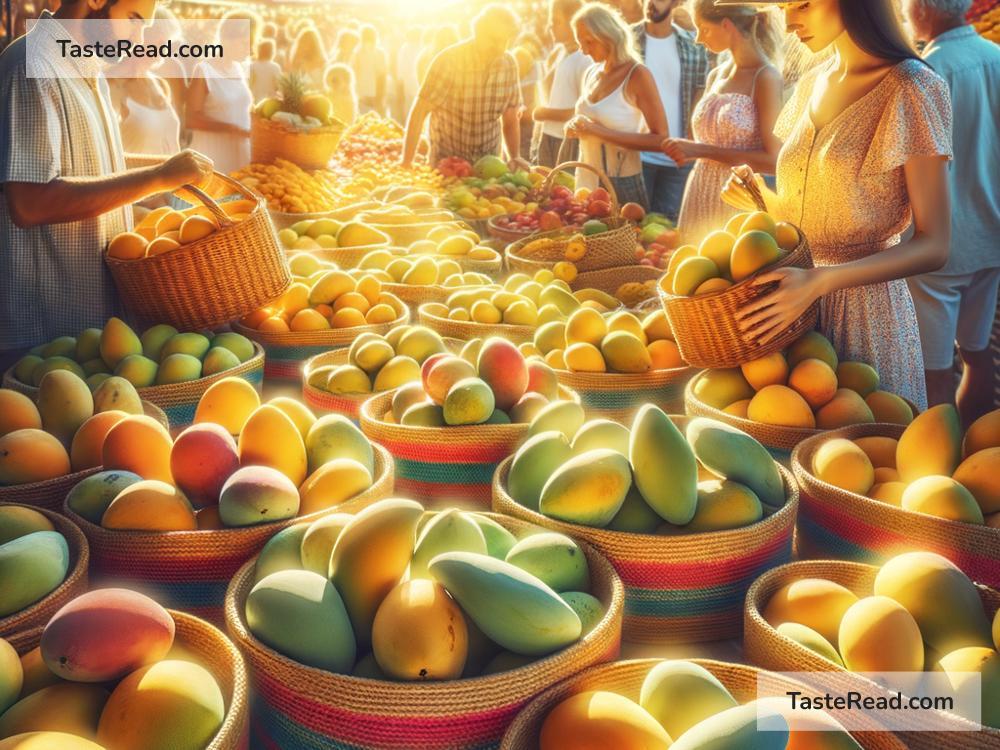How Mangoes Became a Symbol of Summer
Imagine a sunny day in summer, with the warm sun shining brightly, and the sweet fragrance of ripe mangoes filling the air. Mangoes, with their juicy and delicious taste, are loved by people all over the world. But have you ever wondered how mangoes became a symbol of summer? Let’s go on a journey to explore the story behind mangoes and their special connection to this vibrant season.
The History of Mangoes
The story of mangoes begins thousands of years ago in South Asia. Mangoes are believed to have originated in India, where they were first cultivated more than 4,000 years ago. Ancient texts, such as the sacred Hindu scriptures, mention mangoes as a divine fruit. Kings and emperors were often fond of mangoes, treating them as treasures and sharing them as gifts. The mango tree even came to symbolize prosperity, love, and happiness in Indian culture.
As time passed, mangoes traveled to new places. Traders and travelers carried mango seeds to different parts of the world, including Southeast Asia, the Middle East, and eventually Africa and the Americas. Today, mangoes are grown in more than 100 countries, with India still being the largest producer.
A Perfect Summer Fruit
Mangoes thrive in warm and sunny climates, which is why they grow abundantly during the summer months. From March to July, mango trees burst with flowers that develop into sweet, golden fruits. The timing of mango season is perfect—it arrives just as the temperatures start to rise, offering refreshing relief from the heat.
Eating mangoes in summer feels like a treat. Their juicy flesh can cool you down, and the burst of flavors—sweet, tangy, and rich—is incredibly satisfying. Whether they’re enjoyed sliced, blended into smoothies, turned into ice creams, or added to salads, mangoes bring joy to everyone during the hot months.
Mangoes Around the World
Mangoes are loved in different ways around the world, but their connection to summer remains the same. Let’s take a look at how some cultures celebrate mangoes:
-
India: In India, summer is incomplete without mangoes. Families gather to share mangoes, and many special dishes are made during the season. For example, “aamras” (a mango puree) is a favorite in Indian households. Alphonso mangoes, known for their rich taste, are considered the “king of mangoes.”
-
Southeast Asia: In Thailand, “mango sticky rice” is a popular summer dessert made from ripe mangoes, sticky rice, and coconut milk. The combination of flavors makes it a delightful treat during the hot weather.
-
Caribbean: In the Caribbean, mangoes are used in refreshing drinks, jams, and sauces. People often slice mangoes and enjoy them as a quick snack while relaxing on the beach.
-
Latin America: In countries like Mexico, mangoes are eaten with chili powder, lime, and salt. This spicy and tangy way of enjoying mangoes adds excitement to the summer palette.
Mango Festivals and Celebrations
Mangoes are not just fruits—they are celebrated as icons of summer in many parts of the world. Countries that grow mangoes often organize mango festivals during the peak season. These festivals showcase different varieties of mangoes, from small and sweet to large and tangy. Visitors can taste mango delicacies, learn about mango farming, and enjoy music and dancing.
One famous example is the International Mango Festival held in India during summer. Here, people come together to celebrate mangoes through competitions, exhibitions, and cooking demonstrations. Such events remind everyone of the joy mangoes bring during the season.
Nostalgia and Memories
For many people, mangoes are linked to childhood memories and happy times. They remind us of summers spent playing under mango trees, eating mangoes with sticky fingers, or sharing slices with friends and family. Mangoes have a way of bringing people closer and creating moments that stay in our hearts.
In rural areas, people often climb mango trees to pick fresh fruits during the summer. This simple act reflects the bond between humans and nature, and it’s a tradition that carries forward through generations.
Mangoes in Modern Times
Even though life has changed with technology and global trade, mangoes remain a timeless summer symbol. Grocery stores stock mangoes during the season, and people eagerly wait to buy the first batch of ripe mangoes. Social media is flooded with mango recipes, mango photos, and mango-themed challenges each year.
Farmers continue to play an important role in the mango story. By growing mangoes sustainably, they ensure that future generations can enjoy this wonderful fruit during summers. Supporting local farmers and buying fresh mangoes is a great way to honor this tradition.
The Sweet Connection Between Mangoes and Summer
The connection between mangoes and summer lies in their ability to bring happiness, refreshment, and nostalgia to us all. Whether in tropical countries or cooler regions, people associate mangoes with sunshine, relaxation, and delicious flavors. They have become more than just fruits—they represent the spirit of summer itself.
So, the next time you bite into a ripe mango, think about its journey over thousands of years and how it came to define the season. Enjoy its sweetness, share it with loved ones, and celebrate the joys of summer that mangoes bring!


